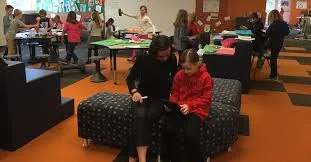In the bustling education hubs of New York City, school administrators and facility managers are increasingly faced with a familiar question: how to improve learning spaces without overextending budgets or disrupting ongoing instruction. Classrooms that once served their purpose may no longer meet evolving academic demands, accommodate new teaching methods, or support student engagement. When that happens, schools must decide between reconfiguring existing furniture or opting for a complete replacement. With a focus on quality installation, the right approach can breathe new life into classrooms and restore their functionality.
Evaluating the condition and potential of existing furniture
Before making a decision, it is helpful to assess what is currently in place. Many classrooms are equipped with durable pieces that, although outdated in design, remain structurally sound. Desks, chairs, shelving units, and teacher stations may show signs of wear but still offer solid performance. In these cases, a thoughtful reconfiguration may be the most efficient solution.
Reconfiguring furniture involves repositioning or repurposing existing items to serve instructional goals better. This might include creating small group work areas, freeing up space for technology integration, or adjusting room orientation to improve sightlines and movement. When paired with professional installation, even modest changes can significantly enhance classroom flow and functionality.
However, if furniture is damaged, outdated beyond repair, or no longer meets the needs of students and educators, replacement becomes a more viable option. Broken wheels, worn padding, unstable frames, and surfaces that no longer clean easily are signs that furniture has reached the end of its practical life.
Meeting modern educational demands
Today’s classrooms are expected to support a wide range of learning activities, including group discussions, independent study, hands-on projects, and digital instruction. As pedagogy shifts toward flexibility and collaboration, the physical environment must keep pace.
Reconfiguration allows schools to make quick adjustments without a significant financial outlay. For example, fixed desks can be replaced with movable tables using the same support structures, or traditional front-facing layouts can be converted into pods that encourage student interaction. With a skilled installation team, these changes are completed with minimal disruption and careful attention to safety and durability.
On the other hand, newer furniture lines are often designed with these concepts in mind. They may include features such as height adjustability, built-in charging ports, stackable or mobile designs, and durable finishes that support high-traffic environments. For schools undergoing broader curriculum changes or preparing for increased enrollment, investing in new furniture may offer long-term benefits.
Budget considerations and long-term planning
Budget often plays a central role in deciding between reconfiguration and replacement. Reusing and repositioning existing items is typically more cost-effective in the short term. It allows schools to make improvements without significant capital investment, especially if the furniture is in good condition and simply needs to be reoriented.
That said, replacement may offer more value over time. New furniture typically comes with manufacturer warranties, enhanced ergonomics, and modern design features that support a broader range of classroom activities. It may also require less maintenance, thereby reducing long-term costs associated with repairs or frequent adjustments.
When choosing either route, professional installers can help schools weigh the cost of labor, potential downtime, and the lifecycle of the furniture. Their insight is especially valuable when coordinating delivery schedules, room-by-room staging, and compliance with safety standards for young learners.
Enhancing learning without disrupting teaching
One of the most significant advantages of working with experienced installation professionals is their ability to complete work efficiently and discreetly. Reconfigurations are often performed after hours or during school breaks, and replacements can be coordinated to ensure smooth transitions between terms. This helps minimize the impact on teachers and students while still delivering measurable improvements to the space.
Installers also ensure that items are safely anchored, that walking paths are unobstructed, and that each piece is assembled according to the manufacturer’s specifications. Whether reconfiguring or replacing, a clean and organized process helps schools avoid disruptions that can affect the learning environment.
Refreshing a classroom does not always require starting from scratch. In New York City, where space and resources are often limited, thoughtful decisions about furniture can make a substantial difference. Whether reconfiguring existing setups or investing in new pieces, schools can improve their educational spaces with minimal disruption and long-term benefits.
For dependable service and experienced support, Quality Installers offers high-quality installation solutions that help schools make informed choices for their classrooms. Their tailored approach ensures that each project reflects the unique goals and needs of the educational community.
Stay in touch to get more updates & alerts on Baddieshub! Thank you




